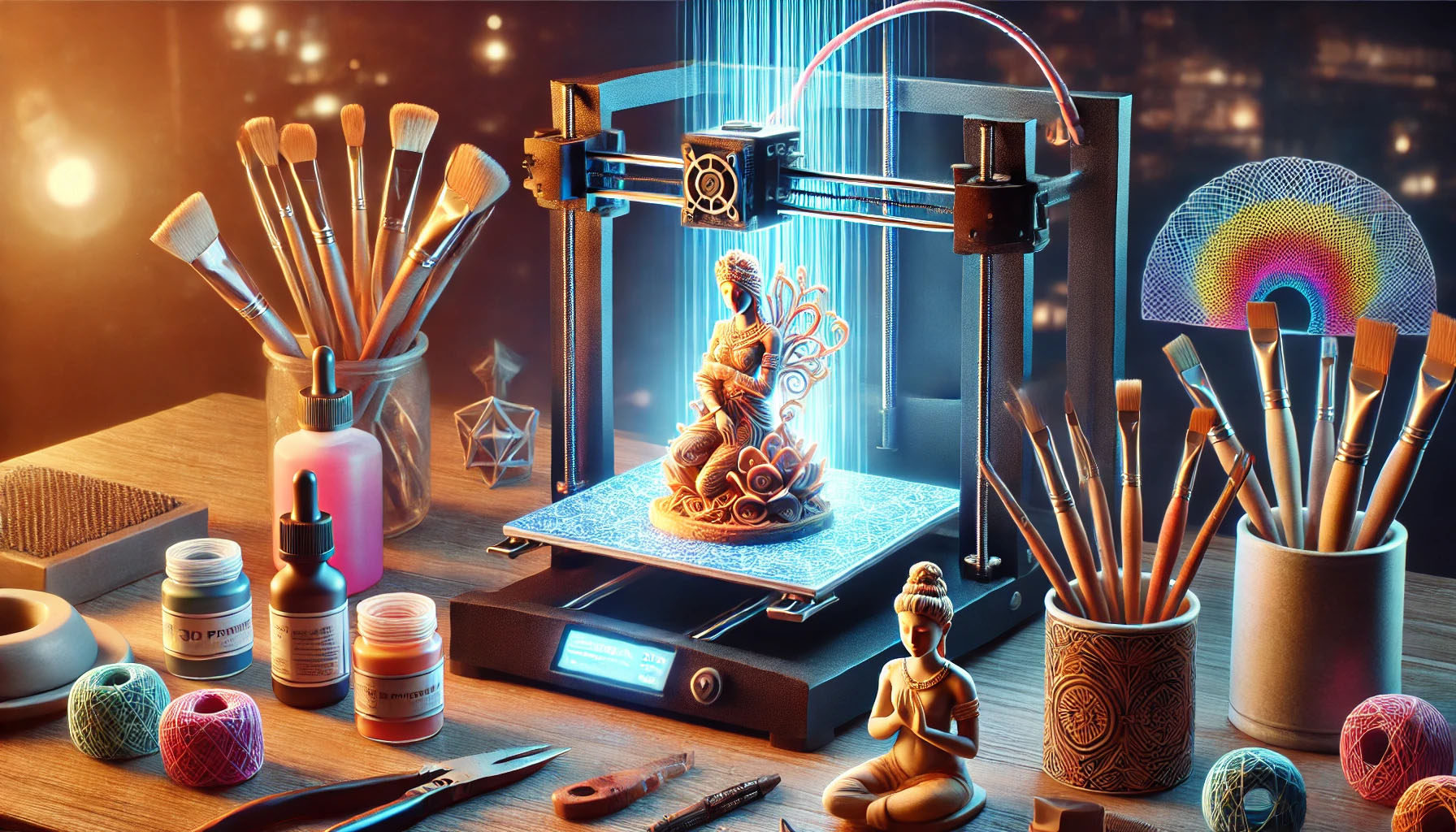3D printing has revolutionized the world of digital art, allowing artists to transform their digital models into physical works with an unprecedented level of detail and precision. In this article, we will explore the most common technologies, available materials, and the possibilities offered by 3D printing for creating artistic figurines.
3D Printing Technologies for Artistic Figurines
1. Stereolithography (SLA)
Stereolithography uses photosensitive resins solidified layer by layer by a laser. This technology is particularly appreciated for:
- High Resolution: Ideal for intricate details and smooth surfaces.
- Versatility: Suitable for miniatures and small models.
SLA printers, such as those offered by Formlabs, start at approximately €3,745, making them an accessible choice for artists and design studios.
2. Fused Deposition Modeling (FDM)
This technology melts plastic filament layers to build the object. It is more affordable compared to SLA, but:
- Limited Detail: Lower resolution, less suitable for very fine details.
- Affordability: Prices start at €500.
Ideal for less detailed projects or initial prototypes. For more information, visit Ultimaker.
3. Selective Laser Sintering (SLS)
SLS uses a laser to fuse nylon powders, creating robust and detailed objects without the need for support structures. However:
- High Cost: High-quality SLS printers start at about €18,499.
- Professional Applications: Suitable for high-end production.
Learn more at 3D Systems.
Materials for Creating Figurines
SLA Resins
These offer a smooth finish and precise details, perfect for artistic figurines. There are various types of resins, such as transparent or colored, for customized effects. Specialized resins can be found at MakerJuice.
FDM Filaments
Materials like PLA and ABS are common, but offer less detail compared to resins. They are still an affordable choice for prototypes or simpler models. For further details, visit MatterHackers.
Nylon Powders for SLS
These ensure robustness and versatility, ideal for complex and durable models. More information is available at Shapeways.
Practical Considerations
Resolution and Detail
SLA and SLS technologies are recommended for finer details, while FDM is suitable for simpler or more economical projects.
Size and Assembly
For large models, the project can be divided into several parts to be assembled later, optimizing print time and quality. For more insights, visit 3D ArcheoLab.
Post-Production
Even with advanced technologies, most 3D prints require manual intervention to improve the final object's quality. Some of the main post-production activities include:
- Removing Supports: In SLA and FDM technologies, the support structures must be manually removed using tweezers or cutters.
- Sanding: To remove visible layer lines, sandpaper of varying grit is used.
- Washing and Post-Curing: In SLA printing, objects need to be washed with isopropyl alcohol to remove unpolymerized resin and undergo UV curing.
- Assembly: For complex models, various parts are glued or assembled manually.
- Painting and Coloring: Most prints require manual painting to achieve a realistic or customized appearance.
- Sealing or Protective Treatments: Transparent coatings or resins are applied to improve the object's durability.
These steps turn a raw object into a finished, high-quality figurine.
Applications in Art
3D printing is used for:
- Custom Sculptures: Artists can create unique works or replicate existing models.
- Artwork Reproduction: It allows for accurate copies to be made for exhibitions or study.
An innovative example in the toy industry is the Hasbro Selfie Series initiative. The global toy and entertainment company Hasbro uses 3D printing to create custom action figures in scale. Thanks to this technology, fans can scan their faces via a smart device and have a personalized action figure delivered to their home, merging the world of 3D printing with pop culture. Find out more at Hasbro.
From Formlabs - Youtube Channel
Moreover, 3D printing is also transforming the film and television industries. Prop makers like Russell Bobbitt for Marvel films, Jaco Snyman for the TV series Raised by Wolves, and the visual effects (VFX) studio Aaron Sims Creative for Stranger Things have adopted this technology. This has led to a significant reduction in the time required to create props and has allowed for greater creative freedom during the design phases. The creation process has become more flexible and fluid, enabling props and models to be made efficiently.
From Formlabs - Youtube Channel
3D printing represents an extraordinary frontier for digital art. With technologies like SLA, FDM, and SLS, artists have versatile tools to transform their digital visions into tangible reality. However, the process doesn't end with printing: post-production is a crucial step for enhancing details, finishes, and durability of the object.
With continuous advancements in printing technologies, the future of digital art promises even more innovative developments, allowing more creators to express their artistic visions.








Leave a Comment